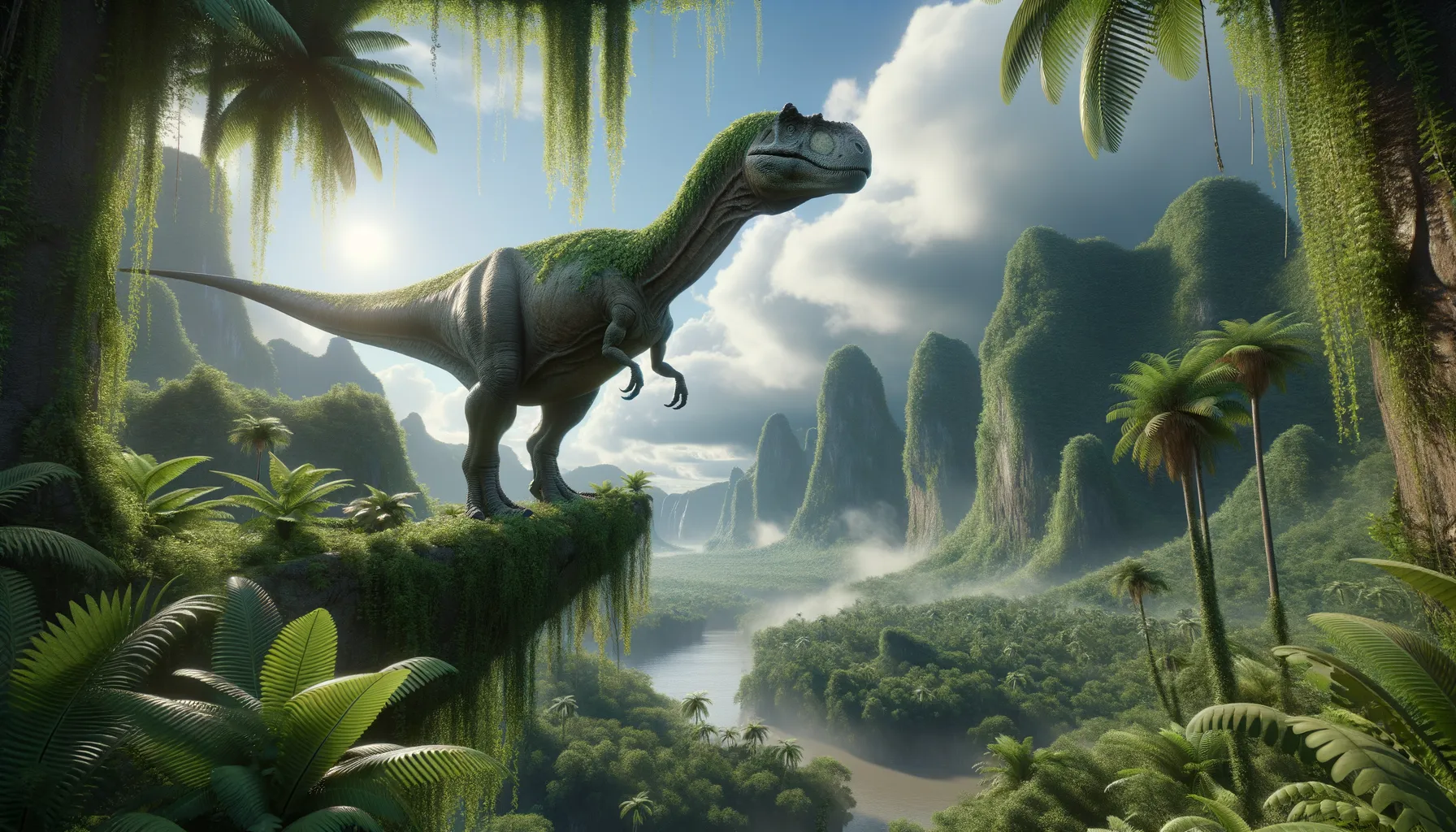
Qingxiusaurus
A gentle giant of ancient China.
Period
Cretaceous
Length
Approximately 20 meters long.
Height
Estimated around 10 meters tall.
Weight
Likely over 30 tons.
Qingxiusaurus was a massive herbivorous dinosaur known for its towering stature and long neck. Discovered in the Late Cretaceous rocks in southern China, it belonged to the sauropod family, which includes some of the largest creatures to have walked on Earth. This dinosaur likely roamed in lush, verdant environments, feeding on high vegetation. Though its speed was limited due to its immense size, its sheer presence offered protection from many predators of its time.
Diet
Qingxiusaurus was a herbivore, feeding primarily on plants. Due to its long neck, it likely consumed foliage from tall trees and shrubs, allowing it to access a variety of vegetation. With its massive body, it needed a substantial amount of plant material to sustain itself.
Hunting
Hunting was not a behavior associated with Qingxiusaurus, as it was a plant-eater. Instead, it focused on foraging for accessible plant life. It would move slowly through its environment to find the most nutritious flora available.
Environmental challenges
Qingxiusaurus faced environmental challenges such as varying climate conditions that could affect its food supply. Seasonal changes might have required it to migrate to areas with abundant vegetation. The dinosaur also needed to stay hydrated, requiring access to water sources in its habitat. Furthermore, its large size meant it had to defend itself against large predators, mainly through its size and group behavior.
Speed
Likely slow due to its large size.
Lifespan
Estimated to be several decades long.
First discovery
Discovered in 2007 in China.
Fun Facts
- Qingxiusaurus was a type of sauropod dinosaur, known for its long neck and tail.
- It lived in what is now China during the Late Cretaceous period, around 90 million years ago.
- The name Qingxiusaurus means 'Qingxu lizard,' named after the area where its fossils were discovered.
- Qingxiusaurus was a herbivore, feeding on plants with the help of its long neck to reach high vegetation.
- This dinosaur is known from only partial fossil remains, so much about it is still a mystery to scientists.
- Paleontologists believe that Qingxiusaurus was closely related to other long-necked dinosaurs like the famous Brachiosaurus.
- The discovery of Qingxiusaurus has helped scientists better understand the diversity of sauropods in prehistoric China.
Growth and Development
As a sauropod, Qingxiusaurus grew rapidly after hatching to avoid predation. Juveniles had different dietary needs compared to adults, sometimes feeding on lower vegetation until they could reach taller plants. The growth spurt period was crucial for ensuring survival and reaching the size necessary to fend off threats. Its development involved changes in body size and potential shifts in habitat to meet its dietary demands.
Habitat
Qingxiusaurus inhabited lush environments with plenty of trees and plant life. Its habitat would have included forested regions with significant access to water sources. The environment needed to support a large population of herbivores, providing enough food to sustain them. These areas were typically warm and moist, ideal for flourishing vegetation and a stable ecosystem.
Interaction with other species
Qingxiusaurus might have coexisted with other herbivorous dinosaurs, sharing grazing areas. Its large size enabled it to intimidate smaller species, asserting dominance over prime feeding locations. It might have formed herds or groups for social behavior and protection. The presence of predators in its environment necessitated vigilance and potentially collaborative defensive strategies with other sauropods.
Natural lifespan
Qingxiusaurus likely lived for several decades.
Reproduction
Qingxiusaurus likely laid eggs, as was common with sauropods. It is believed that the dinosaur engaged in nesting behaviors, creating safe environments for their eggs. Parental care could have been minimal, with hatchlings need to quickly adapt to avoid predators. Reproduction would have been cyclic, possibly influenced by environmental conditions and availability of resources.
Social behaviour
Qingxiusaurus may have lived in groups or herds, typical for large herbivores seeking protection. Group living provided safety in numbers, making it harder for predators to isolate individuals. Social interactions likely involved finding suitable feeding locations and migrating according to climate shifts. These behaviors facilitated survival in the Cretaceous ecosystem, balancing competition and cooperation.
Fossil locations
Qingxiusaurus fossils have been found primarily in southern China, indicating its range in the Late Cretaceous period. The discovery adds valuable information about the distribution of sauropods in Asia. Fossilized bones are crucial for understanding its size, structure, and classification among sauropods. Paleontologists continue to study these sites to gather more data about their ecology and behavior.
